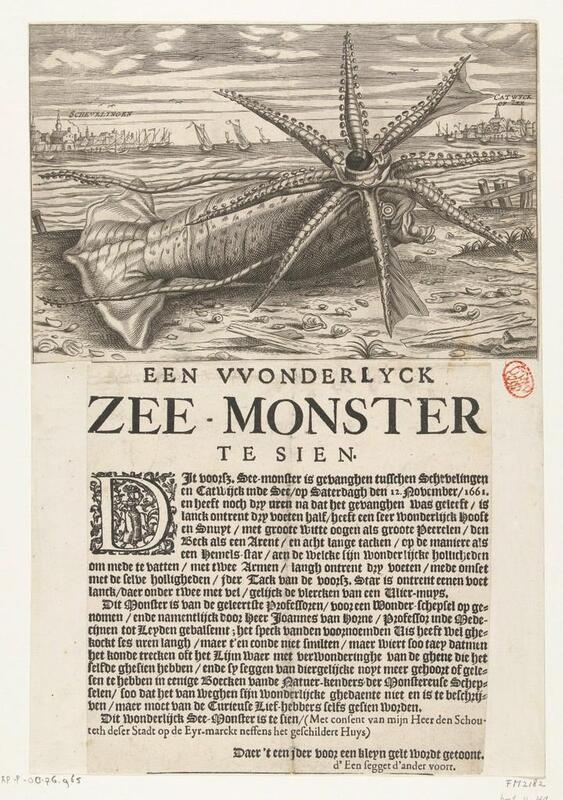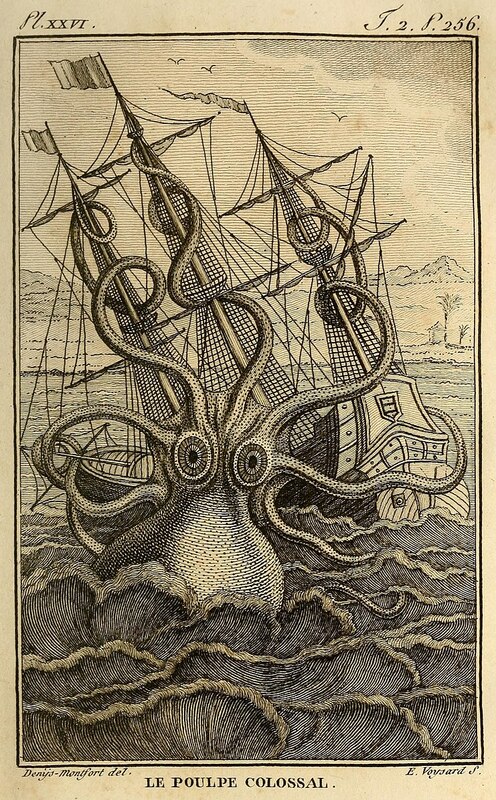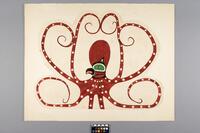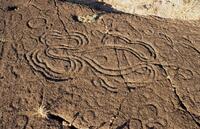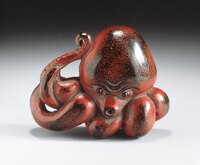Krakens and Squids
Introduction
Big squids, often known as the Kraken, have appeared in the mythology of many different cultures since the mid-1700s. These octopus-like sea monsters are often included in cautionary tales created by sailors and are believed to have originated from first count sightings of these sea monsters. Mythology involving the giant squid originated in Scandinavian and Norwegian culture, and was first documented by Danish historian Erik Pontoppidan in Natural History of Norway in 1752. Pontoppidan described it as “round, flat and full of arms” and was generally surprised by its appearance. Washed up sea specimens began to be associated as part of this legend, and were interpreted as messages from God or the Devil, leading to the concept of myths involving sea angels, sea devils, and sea monks. One of the most infamous is the Kraken– a giant squid-like creature that is known for its colossal tentacles, used to destroy ships and drag sailors into the ocean. In folklore, it is usually associated with looming fear by seamen.
Squids in Greek Mythology
Scylla is a creature seen in Greek mythology resembling an octopus that has similar physical characteristics to those of the creature that originated in Scandinavian mythology. However, Scylla is not known for hunting sailors, as in other cultures. Her myth tells the story of a beautiful maiden and the fisherman god, Glaucus, who had become smitten with her. Glaucus decided to ask the sorceress Circe for a love potion to use on Scylla, however Circe herself fell in love with Glaucus. Upon him refusing to stay with her, Circe becomes angry and curses Scylla into a sea monster. Scylla resides in the Strait of Messina, opposite of her foe Charybdis. Scylla in recent myths is seen as a lazy monster who eats fish and spends a lot of time sleeping at the bottom of the sea.
Kraken as Guardians of the Sea
Stories of Lusca, a half-octopus, half-shark sea monster, originate from the Caribbean. Lusca is a monster with sharp teeth, tentacles, dragon-like features, and sometimes multiple heads. Many cases have also depicted Lusca as a squid-eel hybrid as opposed to the shark-octopus mix. Stories associate Lusca’s breathing with the tidal currents in the water, and people even claim that Lusca is responsible for the disappearance of swimmers and cave divers, going as far as to claim eyewitness accounts. Lusca is known as the guardian of the deep who catches unsuspecting victims.
Giant squid-like creatures are also featured in Japanese mythology. Akkorokamui– the most prominent mythical squid in Japan– is a giant octopus god in the Uchiura Bay. The story of Akkorokamui is that he was a giant red spider named Yaushikep sentenced to the ocean after killing a town of people. He was pulled into the water by the god of the sea, and Yaushikep transformed into an octopus-like creature known as Akkorokamui. He then proclaimed himself Lord of the Bay, becoming its god. Japanese mythology claims that any sailor foolish enough to sail too close to the bay will be swallowed whole by Akkorokamui, causing generations of sailors to avoid the water when the sea and sky are red. However, not all view the squid as malicious, as he is also revered by the Ainu people.
Squid in Māori Culture
Other depictions of giant squid-like creatures include Te Wheke-o-Muturangi, who was a giant octopus in Māori mythology that had been corrupted by a banished priest who had used Te Wheke to steal fish from the nets of the people who had exiled him. The Māori warrior Kupe battled the eight-armed creature, and this battle is told to have been responsible for various landforms in New Zealand, including the Marlborough Sounds, Nelson’s Te Pokohiwi/Boulder Bank, and the two islands known as The Brothers Islands which resulted from Te Wheke getting split in two.
